Malabar Spinach Growing Tips: Unlock the secrets to cultivating this vibrant and nutritious leafy green right in your own backyard! Have you ever dreamt of harvesting fresh, delicious spinach that thrives even in the sweltering summer heat? Well, dream no more! This guide is your passport to a bountiful Malabar spinach harvest, packed with simple DIY tricks and hacks that anyone can master.
Malabar spinach, also known as Basella alba, isn’t actually a true spinach, but a climbing vine with succulent leaves that have been enjoyed for centuries in Asian and African cuisines. Its resilience and unique flavor profile have made it a staple in many cultures. I remember my grandmother always having it growing on her porch, and the taste of it in her stir-fries is something I’ll never forget.
But why should you bother with these Malabar Spinach Growing Tips? Because store-bought spinach often wilts quickly and lacks the robust flavor of homegrown varieties. Plus, Malabar spinach is incredibly easy to grow, pest-resistant, and a nutritional powerhouse, loaded with vitamins and minerals. Imagine stepping outside your door to snip fresh leaves for salads, stir-fries, or soups – it’s a game-changer! This DIY guide will provide you with the knowledge and confidence to cultivate your own thriving Malabar spinach patch, regardless of your gardening experience. Get ready to transform your garden and your plate with this amazing plant!
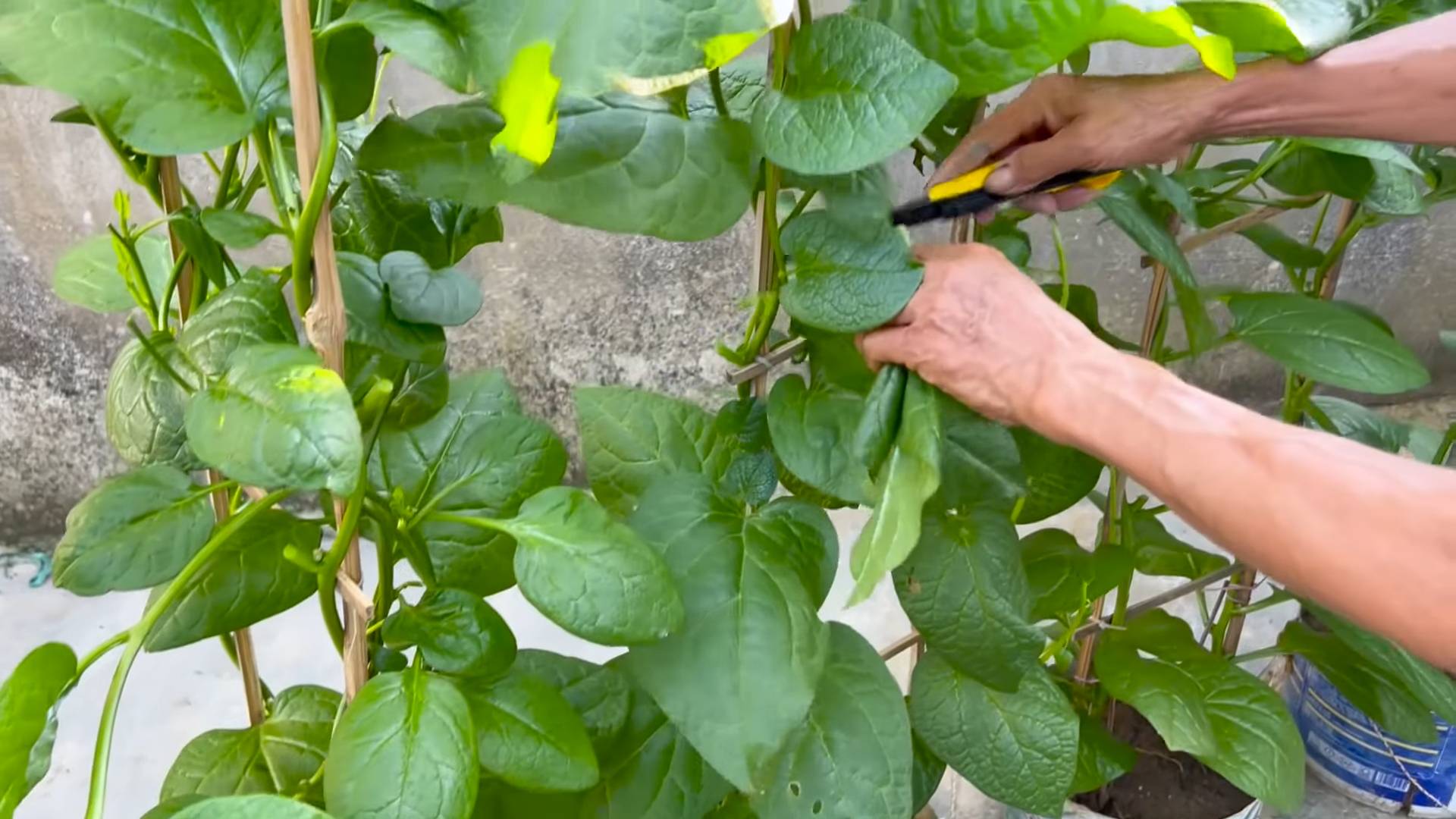
Growing Malabar Spinach: A Beginner’s Guide to This Climbing Delight
Okay, so you’re thinking about growing Malabar spinach? Awesome! I’m here to tell you, it’s easier than you might think, and the rewards are delicious. This isn’t your typical spinach; it’s a heat-loving vine that thrives in warm weather, making it perfect for those of us who struggle to keep regular spinach happy in the summer. Let’s dive into how you can successfully grow this climbing veggie in your own garden.
What is Malabar Spinach Anyway?
Before we get started, let’s clarify what we’re dealing with. Malabar spinach ( *Basella alba* or *Basella rubra*) isn’t actually related to true spinach. It’s a vine with thick, succulent leaves that taste similar to spinach but with a slightly peppery or citrusy note. The red-stemmed variety (*Basella rubra*) is particularly beautiful, adding a pop of color to your garden. It’s also incredibly nutritious, packed with vitamins and minerals.
Getting Started: Seeds vs. Cuttings
You have two main options for starting your Malabar spinach journey: seeds or cuttings. I’ve had success with both, but here’s a breakdown to help you decide:
* **Seeds:**
* **Pros:** Widely available, relatively inexpensive.
* **Cons:** Can be slow to germinate, requires pre-soaking.
* **Cuttings:**
* **Pros:** Faster to establish, clones the parent plant (ensuring you get the variety you want).
* **Cons:** Requires access to an existing plant.
Starting from Seeds: A Step-by-Step Guide
If you’re going the seed route, be prepared for a little patience. Malabar spinach seeds have a tough outer coating that can hinder germination. Here’s how I get them going:
1. **Soak the Seeds:** This is crucial! Place the seeds in a small bowl of warm water and let them soak for 24-48 hours. This softens the outer shell and encourages sprouting. I usually change the water once or twice during this process.
2. **Prepare Your Seed Starting Mix:** Use a well-draining seed starting mix. You can buy a pre-made mix or create your own by combining equal parts peat moss (or coco coir), perlite, and vermiculite.
3. **Sow the Seeds:** Fill small pots or seed trays with the seed starting mix. Make a small indentation (about 1/2 inch deep) in the center of each pot and place 2-3 seeds in each. Cover lightly with the mix.
4. **Water Gently:** Water the pots gently to moisten the soil. Avoid overwatering, which can lead to rot. A spray bottle works well for this.
5. **Provide Warmth and Light:** Malabar spinach needs warmth to germinate. Aim for a soil temperature of 70-80°F (21-27°C). You can use a heat mat to speed things up. Place the pots in a bright location, such as a sunny windowsill or under grow lights.
6. **Keep the Soil Moist:** Check the soil moisture regularly and water when the top inch feels dry.
7. **Thin Seedlings (If Necessary):** Once the seedlings emerge (usually in 1-3 weeks), thin them to one strong seedling per pot. Snip off the weaker seedlings at the soil line.
8. **Harden Off Seedlings:** Before transplanting your seedlings outdoors, you’ll need to “harden them off.” This gradually acclimates them to outdoor conditions. Start by placing the seedlings outdoors in a sheltered location for a few hours each day, gradually increasing the amount of time they spend outside over the course of a week.
Propagating from Cuttings: A Quick and Easy Method
If you have access to a Malabar spinach plant, taking cuttings is a super easy way to propagate new plants. Here’s how I do it:
1. **Take Cuttings:** Choose healthy stems that are about 4-6 inches long. Use clean, sharp scissors or pruning shears to make the cuts just below a node (the point where a leaf grows from the stem).
2. **Remove Lower Leaves:** Remove the leaves from the bottom 1-2 inches of the cutting. This will prevent them from rotting when you put the cutting in water.
3. **Root in Water:** Place the cuttings in a glass or jar of water, making sure that the nodes are submerged.
4. **Change the Water Regularly:** Change the water every 1-2 days to keep it fresh.
5. **Wait for Roots to Develop:** In a week or two, you should see roots starting to emerge from the nodes.
6. **Plant the Cuttings:** Once the roots are about an inch long, you can plant the cuttings in pots filled with well-draining potting mix.
Planting Your Malabar Spinach
Whether you started from seeds or cuttings, it’s time to get your Malabar spinach into its permanent home.
1. **Choose a Sunny Location:** Malabar spinach needs at least 6 hours of sunlight per day.
2. **Prepare the Soil:** The soil should be well-draining and rich in organic matter. Amend the soil with compost or well-rotted manure before planting.
3. **Provide Support:** Remember, Malabar spinach is a vine, so it needs something to climb on. A trellis, fence, or even a sturdy stake will work. I’ve even seen people grow it up tomato cages!
4. **Plant the Seedlings or Cuttings:** Dig a hole that’s slightly larger than the root ball of your seedling or cutting. Gently remove the plant from its pot and place it in the hole. Backfill with soil and water thoroughly. Space plants about 12-18 inches apart.
5. **Mulch:** Apply a layer of mulch around the plants to help retain moisture and suppress weeds.
Caring for Your Malabar Spinach
Once your Malabar spinach is planted, it’s relatively low-maintenance. Here’s what you need to do to keep it happy and productive:
* **Watering:** Water regularly, especially during hot, dry weather. The soil should be consistently moist but not waterlogged.
* **Fertilizing:** Feed your Malabar spinach every few weeks with a balanced fertilizer. You can use a liquid fertilizer or a slow-release granular fertilizer.
* **Pruning:** Prune the vines regularly to encourage branching and keep them from getting too unruly. You can also pinch off the growing tips to promote bushier growth.
* **Pest and Disease Control:** Malabar spinach is generally pest-resistant, but keep an eye out for aphids, spider mites, and snails. Treat any infestations promptly with insecticidal soap or neem oil. Good air circulation can help prevent fungal diseases.
Harvesting Your Malabar Spinach
The best part! You can start harvesting leaves as soon as the plant is established, usually about 6-8 weeks after planting.
1. **Harvest Regularly:** The more you harvest, the more the plant will produce.
2. **Harvest Leaves and Stems:** You can harvest both the leaves and the tender stems.
3. **Use Sharp Scissors or Pruning Shears:** Cut the leaves and stems cleanly to avoid damaging the plant.
4. **Harvest in the Morning:** Harvest in the morning when the leaves are at their peak freshness.
Using Your Harvest
Malabar spinach is incredibly versatile in the kitchen. You can use it in all the same ways you would use regular spinach:
* **Salads:** Add fresh leaves to salads for a slightly peppery flavor.
* **Soups and Stews:** Use it in soups and stews as a thickening agent.
* **Stir-fries:** Add it to stir-fries for a healthy and delicious boost.
* **Smoothies:** Blend it into smoothies for a nutritious green drink.
* **Sautéed:** Sauté it with garlic and olive oil for a simple and flavorful side dish.
Troubleshooting
Even with the best care, you might encounter a few challenges. Here are some common problems and how to address them:
* **Slow Germination:** If your seeds are slow to germinate, make sure they are properly soaked and kept warm.
* **Yellowing Leaves:** Yellowing leaves can be a sign of overwatering, underwatering, or nutrient deficiency. Adjust your watering schedule and fertilize as needed.
* **Pest Infestations:** Treat pest infestations promptly with insecticidal soap or neem oil.
* **Fungal Diseases:** Ensure good air circulation and avoid overwatering to prevent fungal diseases.
Final Thoughts
Growing Malabar spinach is a rewarding experience. It’s a beautiful, productive, and delicious addition to any garden. With a little care and attention, you’ll be enjoying fresh, homegrown spinach all summer long. Happy gardening!
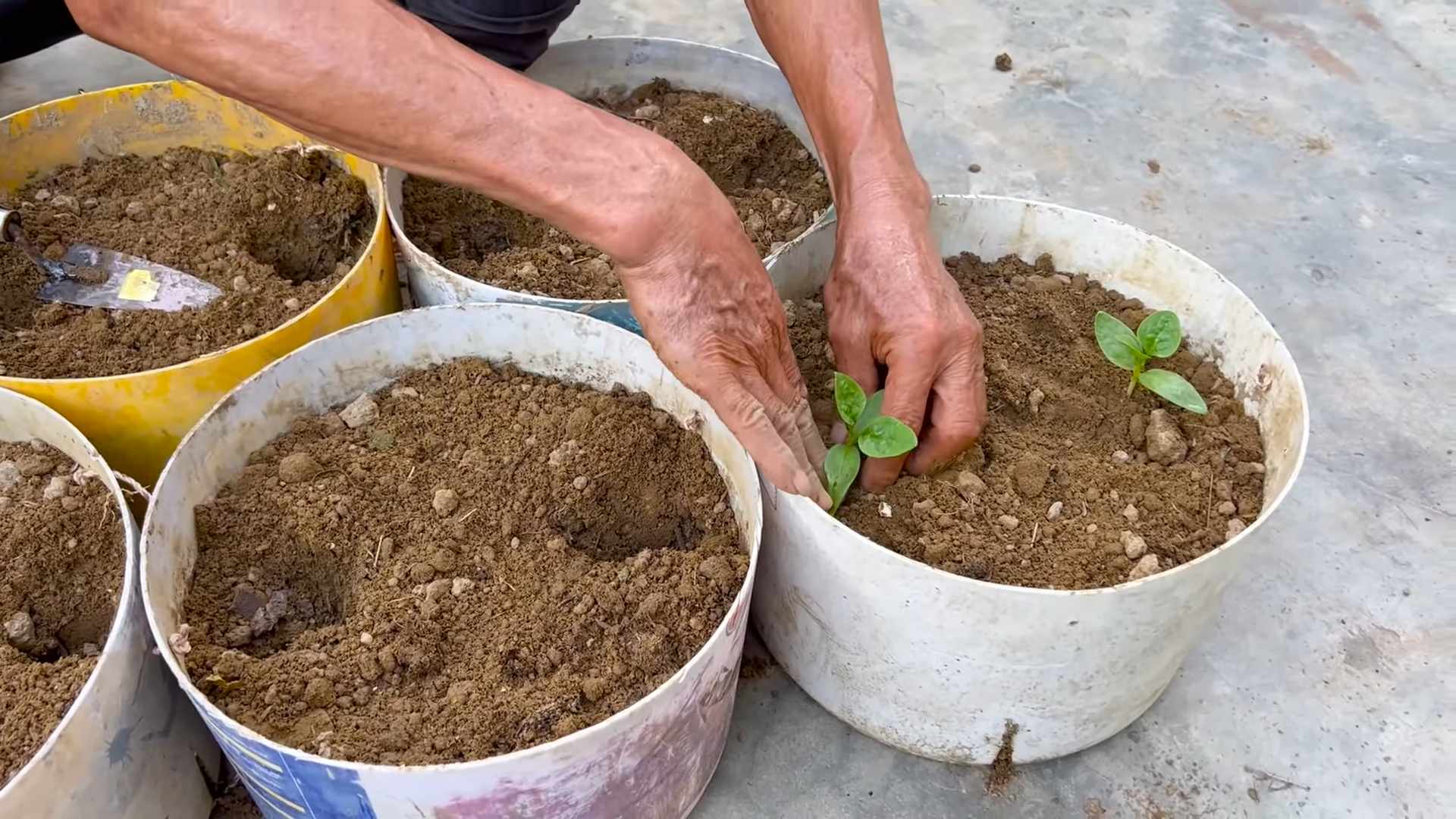
Conclusion
So, there you have it! Mastering the art of growing Malabar spinach doesn’t require a green thumb blessed by the gardening gods. It’s about understanding its needs, providing the right environment, and a little bit of patience. This DIY approach to cultivating your own fresh, vibrant Malabar spinach is more than just a gardening project; it’s an investment in your health, your culinary creativity, and your connection to nature.
Why is this a must-try? Because store-bought spinach, while convenient, often lacks the freshness and robust flavor of homegrown varieties. Plus, you have complete control over the growing process, ensuring your Malabar spinach is free from harmful pesticides and chemicals. Imagine the satisfaction of harvesting your own leafy greens, knowing exactly where they came from and how they were nurtured.
Beyond the basic growing tips, there’s room for experimentation. Consider these variations to personalize your Malabar spinach journey:
* Vertical Gardening: If you’re short on space, Malabar spinach thrives in vertical gardens. Use trellises, hanging baskets, or even repurposed pallets to create a stunning and productive green wall.
* Companion Planting: Enhance your garden’s ecosystem by planting Malabar spinach alongside beneficial companions like basil, marigolds, or nasturtiums. These plants can deter pests and attract pollinators, creating a healthier growing environment.
* Container Gardening: For those with limited outdoor space, container gardening is an excellent option. Choose a large pot with good drainage and use a high-quality potting mix.
* Different Varieties: While the green-stemmed variety is most common, explore other cultivars like the red-stemmed Malabar spinach for a visually appealing and slightly different flavor profile.
* Seed Saving: Once your Malabar spinach plants mature, consider saving the seeds for future planting. This is a sustainable way to ensure a continuous supply of fresh greens.
Growing your own Malabar spinach is not just about having access to fresh produce; it’s about embracing a more sustainable and self-sufficient lifestyle. It’s about connecting with the earth and experiencing the joy of nurturing something from seed to harvest. It’s about adding a touch of vibrant green to your garden and a burst of flavor to your meals.
We wholeheartedly encourage you to give this DIY Malabar spinach growing trick a try. Don’t be afraid to experiment, adapt, and learn along the way. Gardening is a journey, not a destination. And the rewards of growing your own food are immeasurable.
Once you’ve embarked on your Malabar spinach adventure, we’d love to hear about your experience! Share your tips, successes, and challenges in the comments below. Let’s create a community of passionate gardeners who are dedicated to growing their own fresh, healthy, and delicious Malabar spinach. Happy gardening!
Frequently Asked Questions (FAQ)
What are the ideal growing conditions for Malabar spinach?
Malabar spinach thrives in warm, humid climates with plenty of sunlight. Aim for at least 6 hours of direct sunlight per day. The ideal temperature range is between 70°F and 90°F (21°C and 32°C). The soil should be well-draining and rich in organic matter. Amend your soil with compost or aged manure before planting to improve its fertility and drainage. Consistent moisture is crucial, so water regularly, especially during hot and dry periods. Mulching around the plants can help retain moisture and suppress weeds.
How often should I water my Malabar spinach plants?
Water your Malabar spinach plants deeply and regularly, especially during hot and dry weather. The soil should be consistently moist but not waterlogged. Check the soil moisture by sticking your finger about an inch deep into the soil. If it feels dry, it’s time to water. In general, you may need to water daily or every other day during the peak growing season. Reduce watering frequency during cooler periods or when rainfall is abundant. Overwatering can lead to root rot, so ensure your soil has good drainage.
What kind of fertilizer should I use for Malabar spinach?
Malabar spinach benefits from regular fertilization to support its rapid growth. Use a balanced fertilizer with an NPK ratio of around 10-10-10 or 14-14-14. You can also use organic fertilizers like compost tea, fish emulsion, or seaweed extract. Apply fertilizer every 2-3 weeks during the growing season, following the instructions on the fertilizer package. Avoid over-fertilizing, as this can lead to excessive foliage growth at the expense of flavor and nutrient uptake.
How do I harvest Malabar spinach?
You can start harvesting Malabar spinach leaves as soon as the plants are established and have reached a reasonable size. Typically, this is about 6-8 weeks after planting. Harvest the leaves by snipping them off with scissors or pruning shears, leaving about an inch of stem attached. You can also harvest the tender stems along with the leaves. Regular harvesting encourages the plant to produce more leaves, so don’t be afraid to harvest frequently. Avoid harvesting more than one-third of the plant at a time to allow it to recover and continue growing.
What are some common pests and diseases that affect Malabar spinach?
Malabar spinach is generally resistant to pests and diseases, but it can occasionally be affected by aphids, spider mites, or leaf miners. Inspect your plants regularly for signs of infestation, such as yellowing leaves, webbing, or small insects. Treat infestations promptly with insecticidal soap, neem oil, or other organic pest control methods. Good air circulation and proper watering can help prevent fungal diseases. If you notice any signs of disease, remove affected leaves and dispose of them properly.
Can I grow Malabar spinach indoors?
Yes, you can grow Malabar spinach indoors, but it requires sufficient light and space. Choose a large pot with good drainage and use a high-quality potting mix. Place the pot in a sunny location, such as a south-facing window, or supplement with artificial grow lights. Ensure the plants receive at least 6 hours of light per day. Water regularly and fertilize every 2-3 weeks. Provide a trellis or other support for the vines to climb. Indoor-grown Malabar spinach may not grow as vigorously as outdoor plants, but it can still provide a steady supply of fresh greens.
Is Malabar spinach heat tolerant?
Yes, Malabar spinach is exceptionally heat tolerant, making it an excellent choice for gardeners in hot climates. It thrives in warm, humid conditions and can withstand temperatures that would cause other leafy greens to wilt. However, it’s still important to provide adequate water and shade during the hottest part of the day to prevent stress. Mulching around the plants can also help keep the soil cool and moist.
How do I save seeds from Malabar spinach?
To save seeds from Malabar spinach, allow some of the plants to mature and produce flowers. After the flowers fade, small, dark berries will form. Allow the berries to ripen fully on the plant until they turn black and become slightly soft. Harvest the berries and gently crush them to extract the seeds. Wash the seeds thoroughly and spread them out on a paper towel to dry completely. Store the dried seeds in an airtight container in a cool, dark, and dry place. The seeds should remain viable for several years.

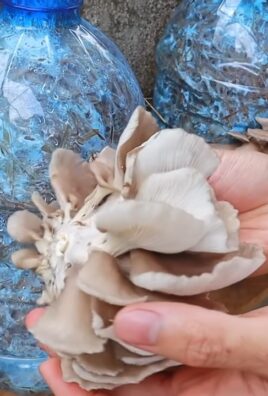
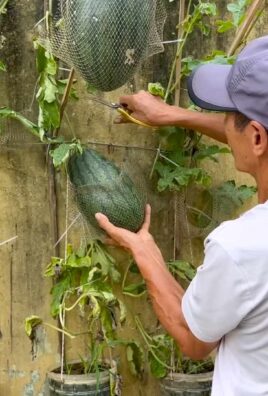
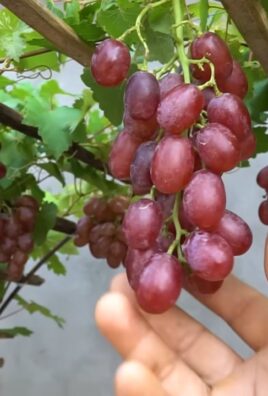
Leave a Comment